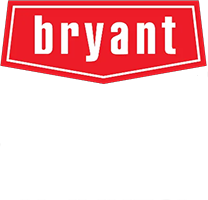Hey neighbor! Let’s talk about something near and dear to every homeowner’s heart, especially here in the Treasure Valley: comfort. Whether we’re trying to escape those sizzling August afternoons or cozy up during a January cold snap, our heating, ventilation, and air conditioning (HVAC) systems are the unsung heroes of our homes. But getting that “just right” temperature isn’t just about having *an* HVAC system; it’s about having the *right* system, installed *correctly*. Trust me, after more than a decade watching folks navigate this, I’ve seen firsthand how a botched installation can turn that hero into a real headache. So, grab a cup of coffee, and let’s walk through what goes into getting your HVAC installation done right here in Meridian.
Why Professional HVAC Installation Matters
Alright, let’s get real. Tempted to save a few bucks by going with the cheapest quote or letting your handy cousin tackle the HVAC install? I get it. But cutting corners here often costs way more in the long run. Proper installation isn’t just about connecting pipes and wires; it’s the foundation for years of reliable comfort and efficiency. When done right, you’ll see lower energy bills because the system isn’t fighting itself, oversized, or leaking conditioned air. It just *works* better, keeping your home consistently comfortable without those annoying hot or cold spots.
And it’s not just about comfort or cash. Think about the air you breathe inside your home all day. A correctly installed system, especially one with proper ductwork sealing and perhaps integrated air quality solutions, plays a huge part in keeping indoor air cleaner. [1, 2] Fewer allergens, less dust – it makes a difference, especially for anyone with allergies or respiratory issues. Sealing those ducts properly during installation keeps nasty stuff from crawl spaces or attics out of your breathing air. It’s a health thing as much as a comfort thing.
Nobody likes unexpected breakdowns, right? A professional installation follows manufacturer specs to the letter, significantly reducing the chances of premature failures or constant repair calls. [3] Everything from refrigerant charging to airflow settings needs to be precise. When these are dialed in correctly from day one, the equipment doesn’t endure unnecessary strain. This means fewer middle-of-the-night emergency calls and a system that’s far more likely to reach, or even exceed, its expected lifespan. Less stress, more savings – win-win.
Finally, there are the rules. Meridian, like all cities, has building codes and safety regulations for HVAC installations. Professionals know these codes inside and out – things like proper ventilation, electrical connections, and clearances. This isn’t just red tape; it’s about safety, ensuring your system operates without posing risks like carbon monoxide leaks or electrical hazards. [3] Proper installation ensures compliance, passes inspections, and protects your home and family. Plus, it often keeps your manufacturer’s warranty valid, which is crucial peace of mind.
The HVAC Installation Process: Step by Step
Okay, so you’re convinced professional installation is the way to go. What does that actually look like? It’s more involved than just swapping out boxes. Here’s a breakdown of what a quality installation process typically involves:
-
Conducting a Load Calculation and Home Energy Assessment: This is step one, and it’s non-negotiable for a good install. Forget rules of thumb based on square footage alone. A *real* load calculation (often using Manual J methodology) considers your home’s size, insulation levels, window types and orientation, air leakage, local climate (hello, Meridian!), and even how many people live there. [4] This determines the exact heating and cooling capacity your home needs. Oversizing is just as bad as undersizing – leading to inefficiency, poor humidity control, and shorter equipment life. Some contractors might also do a basic energy assessment to spot opportunities for sealing leaks or adding insulation, which can further boost comfort and savings.
-
Selecting the Right System Type: Based on the load calculation and your needs, the next step is choosing the equipment. Will it be a traditional gas furnace paired with a central air conditioner? Maybe an all-electric heat pump, which is increasingly popular for its efficiency in both heating and cooling? Or perhaps a ductless mini-split system is better suited for an addition or older home without existing ductwork? Each has its pros and cons regarding cost, efficiency, and suitability for our specific Idaho climate.
-
Verifying Installer Credentials: Before you sign anything, do your homework! Ensure the contractor is licensed to work in Idaho, carries adequate liability insurance (what if they accidentally damage something?), and ideally holds certifications from reputable organizations (like NATE – North American Technician Excellence). [3] This protects you and provides assurance that the technicians are trained to industry standards. Don’t be shy about asking for proof!
-
Reviewing Project Timeline and Key Milestones: A professional contractor will provide a clear scope of work and a realistic timeline. When will they start? How long should the installation take (usually 1-3 days for a standard replacement, maybe longer for complex installs or new ductwork)? What are the key phases? Knowing what to expect helps manage the disruption and ensures everyone is on the same page. Miscommunications here can lead to frustration later.
-
Preparing Your Home for Installation: The crew needs clear, safe access to the work areas – typically where the indoor unit (furnace/air handler), outdoor unit (AC/heat pump), and thermostat are located. This might mean clearing clutter from around the furnace in the garage or basement, ensuring pets are secured, and confirming that utilities (electricity, gas) are operational. Good communication with your installer beforehand makes installation day go much smoother.
-
Final Walkthrough and System Startup Protocol: Once the physical installation is complete, the job isn’t finished. The technicians should perform a thorough startup procedure, checking refrigerant levels, airflow, thermostat calibration, and safety controls. [3] They should then walk you through the new system, explain its operation and maintenance basics (like filter changes!), and answer any questions you have. This final check ensures everything is running optimally before they leave.
Choosing the Right HVAC System for Your Home
Walking into the “HVAC aisle” can feel overwhelming. So many acronyms, ratings, and types! Let’s demystify some of the main choices:
- Central Split Systems: This is the classic setup for many Meridian homes – a furnace (usually gas) inside for heat, paired with an air conditioner unit outside for cooling. Air is distributed through ducts. Pros: Powerful heating, widely understood technology. Cons: Requires ductwork, gas furnaces produce carbon emissions.
- Heat Pumps: These clever devices look like an AC unit but can both heat *and* cool your home by transferring heat. They’re all-electric. Pros: Highly energy-efficient, especially in milder shoulder seasons; provide both heating and cooling in one unit. Cons: May need supplemental heat during deep winter freezes (though modern cold-climate models are much better!), installation cost can be higher upfront.
- Ductless Mini-Splits: These systems have an outdoor unit connected to one or more indoor wall-mounted units, each with its own thermostat. Pros: Great for homes without ducts, additions, or for zoned temperature control; very efficient. Cons: Indoor units are visible, potentially higher cost per “zone” than central systems.
Then there are the efficiency ratings. For cooling, look at the SEER (Seasonal Energy Efficiency Ratio) rating – the higher the number, the more efficient (and the current minimum standard is creeping up!). [1] For heating, furnaces use AFUE (Annual Fuel Utilization Efficiency), representing the percentage of fuel converted to heat (e.g., 95% AFUE means 95% of the fuel becomes heat, 5% is lost). Heat pumps use HSPF (Heating Seasonal Performance Factor) for heating efficiency. Higher numbers mean lower energy bills, but also often a higher upfront cost. It’s about balancing initial investment with long-term savings.
Tired of fighting over the thermostat? Consider a zoned system. Dampers are installed in your ductwork, allowing you to set different temperatures for different areas (zones) of your house – maybe keep the bedrooms cooler at night while the living area stays warmer. This boosts comfort and can save energy by not conditioning unused rooms. It’s a fantastic upgrade, especially for larger or multi-story homes.
Don’t forget indoor air quality (IAQ)! During installation is the perfect time to add whole-house solutions. A humidifier can combat that dry Treasure Valley winter air, making your home feel warmer and protecting wood furniture. [2] An upgraded air filter or an electronic air cleaner can capture more dust, pollen, and other nasties than standard 1-inch filters, giving you healthier air year-round. [2] Discuss these options with your installer based on your family’s needs.
Finally, let’s talk Meridian climate. We get proper seasons! Hot, dry summers mean you need reliable, efficient cooling. Cold, sometimes snowy winters demand robust heating. Heat pumps are increasingly viable here, especially dual-fuel systems (heat pump + furnace backup) or newer cold-climate models. High-efficiency furnaces (90%+ AFUE) are always a solid choice for gas heating. Your installer should recommend options specifically suited to handle our local temperature swings effectively and efficiently.
Ensuring Long-Term Performance After Installation
Okay, your shiny new HVAC system is installed. Job done, right? Well, mostly! Like any complex machine, it needs a little TLC to keep running smoothly and efficiently for years to come. First things first: maintenance is usually required to keep your manufacturer’s warranty valid. Skipping it could mean paying out-of-pocket for repairs that should have been covered.
There are a few simple things you can (and should!) do yourself. The big one? Changing or cleaning your air filter regularly – typically every 1-3 months, depending on the filter type and your home environment (pets, dust levels, etc.). [5] A clogged filter restricts airflow, makes your system work harder, reduces efficiency, and can even lead to breakdowns. Also, keep the outdoor unit clear of debris like leaves, grass clippings, and snow drifts. Occasionally check the condensate drain line (usually a PVC pipe near the indoor unit) to ensure it’s not clogged, especially during cooling season.
While DIY tasks help, they don’t replace professional maintenance. Scheduling an annual tune-up with a qualified technician (one for cooling before summer, one for heating before winter) is crucial. [5] During these visits, they’ll do things you can’t: check refrigerant levels, clean coils, inspect electrical connections, test safety controls, lubricate moving parts, measure airflow, and catch small issues before they become big, expensive problems. Think of it like an oil change and check-up for your car – essential preventative care.
Even with good maintenance, systems eventually need repairs. Keep an eye (and ear) out for warning signs. Are some rooms much hotter or colder than others? Hearing strange noises like grinding, squealing, or banging? Is your system constantly cycling on and off? Have your energy bills inexplicably spiked? These are all signals that something’s amiss and it’s time to call a pro before the issue gets worse or leads to a complete shutdown. Ignoring problems rarely makes them go away – usually, it just makes the eventual repair bill bigger.
Many HVAC companies offer service agreements or maintenance plans. These typically bundle your annual tune-ups at a slight discount and might offer perks like priority service or discounts on repairs. While not essential for everyone, they can provide peace of mind and predictable maintenance costs, making it easier to budget for HVAC care and ensuring those crucial tune-ups don’t get forgotten. It’s worth looking into if you prefer a set-it-and-forget-it approach.
Phew! That was a lot, I know. But getting a new HVAC system is a significant investment in your home’s comfort and value. Understanding the process, from choosing the right equipment to ensuring proper installation and ongoing maintenance, empowers you to make smart decisions. Don’t settle for less than a professional job tailored to our unique Meridian climate.
What are your biggest questions about HVAC installation? Have any experiences (good or bad!) you’d like to share? Drop a comment below – let’s keep the conversation going!

